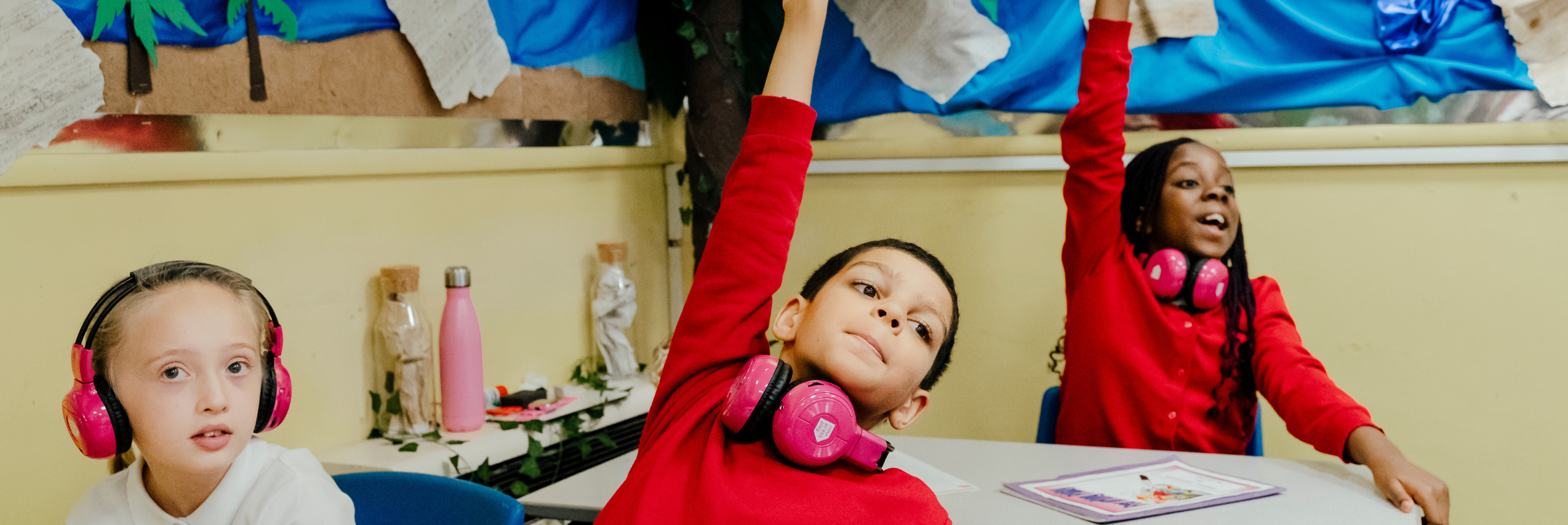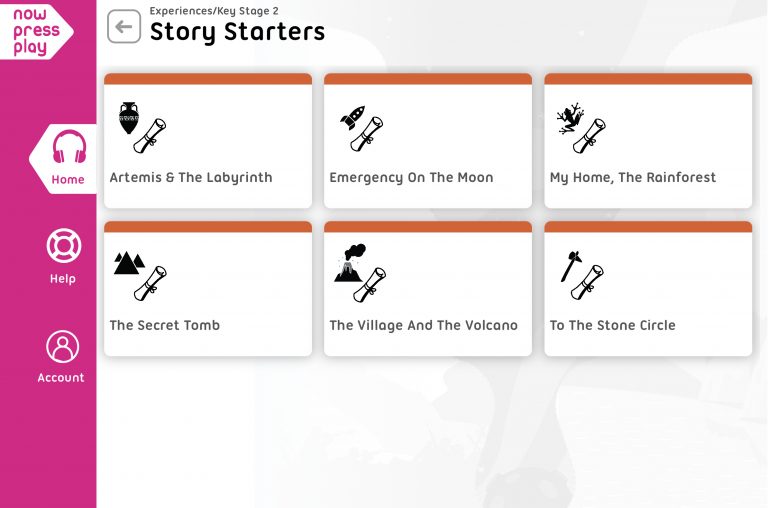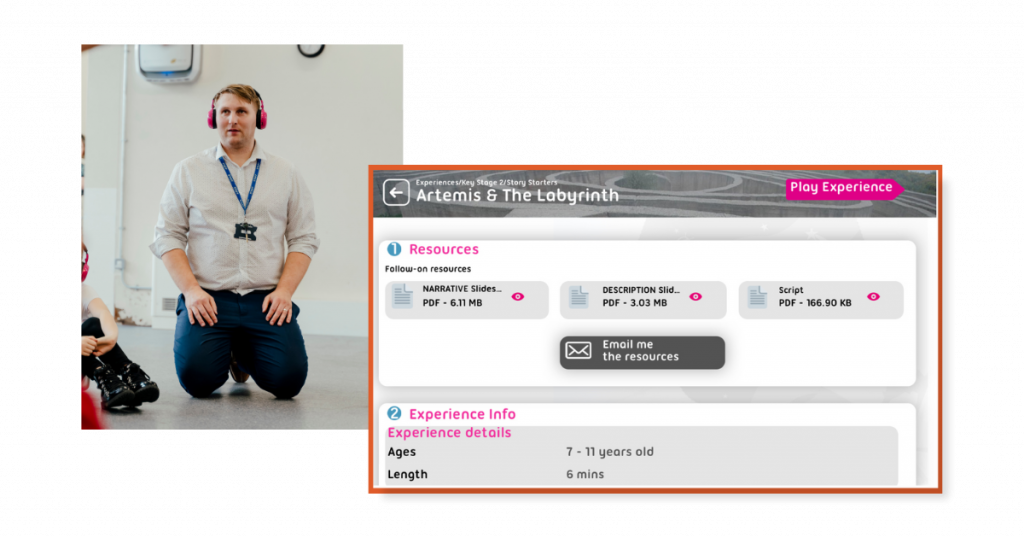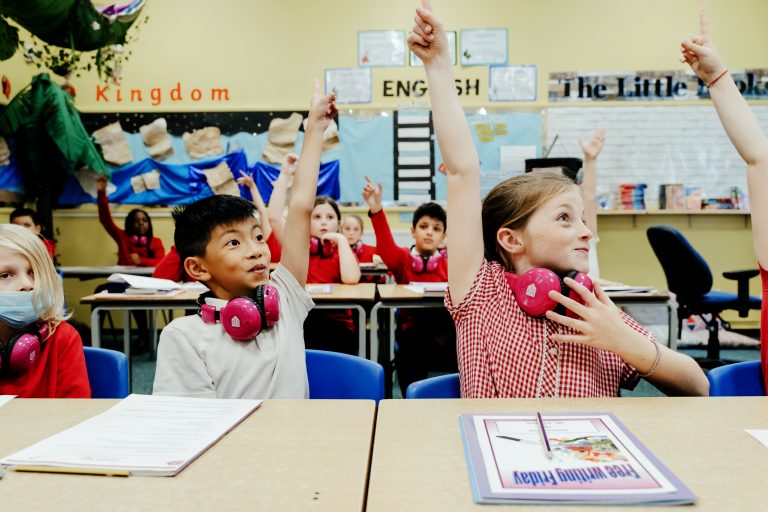
Inspire your KS2 children to produce quality writing with Story Starters, our brand new literacy content. Find out how to use them with your class and ignite their imaginations with immersive sound.
Hear from our Head of Product, Oscar, about how they work.
What are Story Starters?
Story Starters are a new product created by us to inspire KS2 children to produce quality writing using immersive audio.
After listening, pupils then take over the narrative and put pen to paper to continue the story. Or if you prefer, pupils can write a more focused piece of descriptive writing.
Story Starters save teacher time as they don’t require any planning. Teachers will be provided with a lesson structure, including vocabulary and ideas to stimulate the children’s work.
How do you use Story Starters in the classroom?
You can do Story Starters in your classroom as pupils put the pink headphones on and do the actions whilst seated.
You’ll find Story Starters on the now>press>play app under KS2. You can then choose the topic that you want your children to write about.

You’ll notice from the Experience icons that each Story Starter is linked to an existing now>press>play topic. It’s great to do both the Story Starter and the Experience — but you can also do either one in isolation.

1) Narrative writing
One of the writing tasks you can do with your class using the audio is narrative writing. This is a slightly longer piece of writing with a beginning, middle and an end.
For this your class will:
- Listen for the first time to the Story Starter
- Recap the story as a class
- Plan the rest of the story
- Listen again to the story
- Write the story whilst listening to a soundscape
In the slideshow provided, you’ll find questions to get the pupils thinking about what to write next as well as some useful vocabulary. You can use this slide with your normal planning method whether that’s cartoon storyboarding or a story mountain.

2) Descriptive Writing
Using the same audio, this piece of writing gets pupils describing a specific scene from the story. It is a much shorter writing task and will follow the same lesson structure (listen, recap, plan, listen again and write).
You’ll again be provided with useful vocabulary and an opening sentence to get your pupils going.
While they write, the pupils have the option to listen to an evocative soundscape which may help them focus and inform their writing.

Check out our other blogs on writing and literacy:
